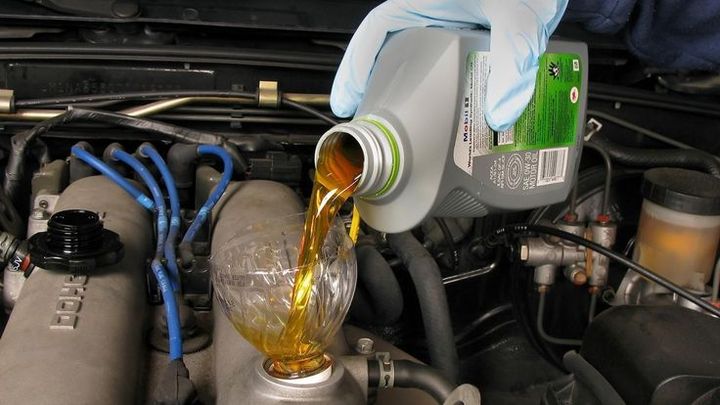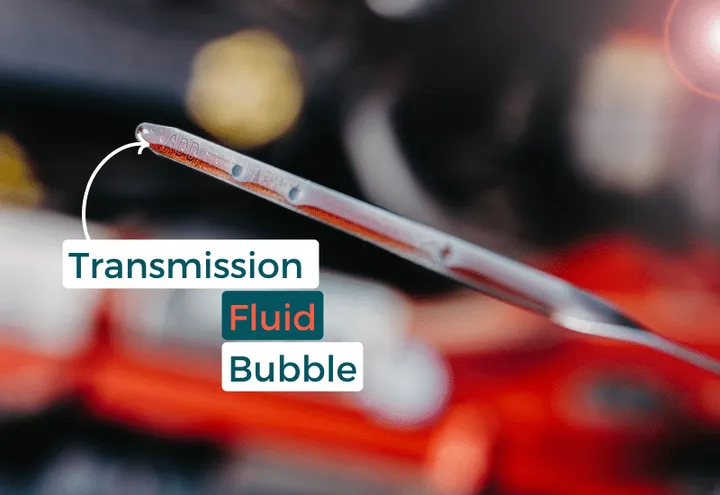


Transmission fluid plays a crucial role in the proper functioning of a vehicle's transmission system. It lubricates the moving parts, transfers power, and helps to cool the transmission components. However, the presence of bubbles or foam in the transmission fluid can indicate underlying issues that require attention. Bubbles in transmission fluid can be caused by various factors, and understanding their causes and potential consequences is essential for maintaining the health of your vehicle's transmission.

Bubbles in transmission fluid can arise from several different factors, and it's crucial to identify the root cause to address the issue effectively. Here are the main culprits:
| Cause | Description |
|---|---|
| Overfilling the Transmission Fluid | When there is too much transmission fluid in the system, the rotating parts inside the transmission can churn and aerate the fluid, causing bubbles to form. This excessive agitation can lead to foaming and the creation of air pockets within the fluid. |
| Low Fluid Level | If the transmission fluid level is low, the pump can suck in air along with the fluid, creating bubbles. This air entrainment can disrupt the fluid's ability to lubricate and cool the transmission components properly. |
| Leaks or Seal Failures | Leaks in the transmission system can allow air to enter, leading to bubbles in the fluid. Additionally, worn or damaged seals can also cause aeration, as they fail to maintain the necessary seal and allow air to seep in. |
| Contamination or Fluid Breakdown | Severe contamination or chemical breakdown of the transmission fluid can cause it to foam and produce bubbles. This can occur due to factors such as moisture ingress, mixing of incompatible fluids, or prolonged use beyond the recommended service intervals. |
As a mechanic, I follow a systematic approach to diagnose bubbles in transmission fluid. Here are the steps I typically take:

Check the transmission fluid level: I always start by checking the transmission fluid level when the transmission is warm and the engine is running. Consulting the owner's manual is crucial to ensure I follow the correct procedure for the specific vehicle. This involves:
Locating the transmission dipstick
Checking the fluid level markings on the dipstick
Ensuring the fluid level is within the recommended range
Inspect the fluid: I look for bubbles or foam on the dipstick or in the fluid itself. Additionally, I check the fluid color and condition, as dark, burnt, or contaminated fluid may indicate a problem.
Observe performance issues: I note any transmission performance issues, such as slipping, delayed engagement, or harsh shifts, which could be related to aerated fluid. These issues may include:
Slipping or loss of power during acceleration
Delayed engagement when shifting gears
Harsh or jerky shifts
Unusual noises or vibrations
Once I've identified the cause of the bubbles in the transmission fluid, I proceed with the appropriate repair procedures. Here are some common approaches:
If the issue is caused by overfilling, I drain the excess fluid to the correct level, following the manufacturer's instructions precisely. This process typically involves:
Locating the transmission drain plug
Allowing the excess fluid to drain into a suitable container
Replacing the drain plug and refilling to the proper level
In cases of low fluid level, I simply add the recommended transmission fluid to the proper level, ensuring I use the correct type of fluid for the vehicle. This involves:
Identifying the correct transmission fluid for the vehicle
Removing the dipstick or fill plug
Slowly adding the new fluid until the level is within the recommended range
When leaks or seal failures are the culprit, I locate and repair any leaks, and replace worn seals as needed. This process can be time-consuming but is essential to prevent further air entry and fluid loss. The steps may include:
Visually inspecting the transmission case, lines, and connections for leaks
Removing and replacing damaged seals or gaskets
Repairing or replacing any leaking components
If the transmission fluid is severely contaminated or has broken down chemically, I perform a complete transmission flush and refill with fresh fluid. This process involves flushing out the old fluid and replacing it with new, clean fluid to restore proper lubrication and cooling. The steps may include:
Connecting a transmission flush machine to the cooler lines
Running the machine to circulate and flush out the old fluid
Refilling the transmission with the recommended new fluid
Throughout my years of experience, I've learned a few valuable tips and cautions when dealing with bubbles in transmission fluid:
Never mix different types of transmission fluids: Mixing incompatible fluids can cause foaming and contamination, exacerbating the problem. Always use the recommended fluid type for your vehicle.
Ensure the transmission is at the correct operating temperature: Checking or adjusting the fluid level when the transmission is not at the proper operating temperature can lead to inaccurate readings and potential overfilling or underfilling. Consult your owner's manual for the correct procedure.
Seek professional assistance if unsure: If you're unsure about any repair procedures, it's always best to seek professional assistance from a qualified mechanic. Attempting complex repairs without the necessary expertise can lead to further damage and costly repairs.
Once the issue of bubbles in the transmission fluid has been addressed, it's essential to take preventive measures to avoid a recurrence. Here are some recommendations:
Follow the manufacturer's recommended service intervals for transmission fluid changes. This typically involves:
Draining and refilling the transmission fluid at specified mileage or time intervals
Using the recommended fluid type and quantity
Check the fluid level regularly and top up if necessary. This can be done by:
Referring to the owner's manual for the correct procedure
Checking the fluid level when the transmission is at operating temperature
Adding the recommended fluid if the level is low
Avoid overfilling or underfilling the transmission. Both conditions can lead to aeration and potential damage.
Address any leaks or seal issues promptly to prevent air entry and fluid loss, which can lead to bubbles in the transmission fluid.
The cost of repairing bubbles in the transmission fluid can vary depending on the underlying cause and the extent of the repairs needed. Here are some approximate cost ranges:
| Repair | Cost Range |
|---|---|
| Fluid drain and refill | $100 - $300 |
| Transmission flush | $150 - $400 |
| Seal replacement | $200 - $800 (depending on the number of seals and labor) |
| Transmission rebuild or replacement | $1,500 - $5,000 (for major internal damage) |
It's important to address bubbles in the transmission fluid promptly, as prolonged operation with aerated fluid can lead to more severe and costly transmission damage, potentially requiring a complete transmission rebuild or replacement.
Bubbles in transmission fluid can be a symptom of various underlying issues, ranging from simple overfilling to more complex problems like leaks, seal failures, or fluid contamination. As a mechanic, I've learned that proper diagnosis and timely repair are crucial to prevent further damage and ensure the longevity of your vehicle's transmission. By following the recommended service intervals, regularly checking fluid levels, and addressing any issues promptly, you can minimize the risk of bubbles in your transmission fluid and enjoy a smooth, reliable driving experience.
Bubbles in transmission fluid can be caused by overfilling, low fluid levels, leaks, seal failures, fluid contamination, or a faulty transmission filter. Aeration of the fluid occurs when air gets mixed into the transmission system.
Check the transmission fluid level when the transmission is warm and the engine is running. Pull out the dipstick and look for bubbles or foam on the dipstick or in the fluid itself.
Yes, bubbles in the transmission fluid can lead to issues like reduced lubrication, increased wear, overheating, and potential transmission failure if left unaddressed.
First, check and adjust the fluid level if needed. If the issue persists, you may need to repair leaks, replace seals, change the transmission filter, or perform a transmission flush.
Yes, overfilling the transmission can cause the rotating parts to churn and aerate the fluid, leading to the formation of bubbles or foam.
Yes, if the fluid level is low, the pump can suck in air along with the fluid, creating bubbles and reducing the fluid's ability to lubricate and cool properly.
Yes, mixing incompatible transmission fluids can cause a chemical reaction that leads to foaming and the formation of bubbles in the fluid.
Maintain the correct fluid level, use the recommended fluid type, address any leaks or seal issues, and follow the manufacturer's recommended service intervals for transmission fluid changes.
Yes, a clogged or improperly installed transmission filter can allow air to enter the system, resulting in bubbles in the fluid.
In some cases, a complete transmission flush and refill with fresh fluid may be necessary to resolve severe contamination or fluid breakdown that is causing excessive foaming or bubbles.

Sarah isn't your average gearhead. With a double major in Mechanical Engineering and Automotive Technology, she dived straight into the world of car repair. After 15 years of turning wrenches at dealerships and independent shops, Sarah joined MICDOT to share her expertise and passion for making cars run like new. Her in-depth knowledge and knack for explaining complex issues in simple terms make her a valuable asset to our team.












